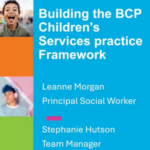
English councils have increased spending on family support services since the start of the decade following years of stagnation, an analysis has found.
Annual real-terms spending grew by 21% from 2020-21 to 2023-24, compared with 2% from 2014-15 to 2020-21, found research on early intervention funding carried out for the Children’s Charities Coalition (Action for Children, Barnardo’s, the Children’s Society, National Children’s Bureau and NSPCC).
The analysis, by research firm Pro Bono Economics, found that spending on early intervention services in general – Sure Start centres, youth services and family support – grew by 13% (just over £300m) in real-terms from 2020-21 to 2023-24.
Family support compared with statutory social care spending
This was driven by growth in family support spending specifically, which increased from £1.44bn in 2020-21 to £1.74bn in 2023-24, in real-terms.
Despite the increase, family support spending was well below councils’ net expenditure on safeguarding children (about £3.3bn) and looked-after children (£7.7bn) in 2023-24.
The government’s children’s social care reforms, which are being rolled out from this month, are designed to engineer a shift in the balance of spending towards early intervention by enabling more children to remain, safely, with their families, through improved support.
New model of working with families
Under the Families First Partnership programme, councils are expected to set up multidisciplinary family help teams with responsibility for families with multiple and complex needs who previously would have come under targeted early help, child in need or child protection services.
The model is designed to provide families with a consistent practitioner – a family help lead practitioner (FHLP) – to carry out direct work and co-ordinate other services, to enable the family to receive tailored support as early as possible.
While new multi-agency child protection teams will be responsible for carrying out enquiries under section 47 of the Children Act 1989 and other safeguarding functions, family help teams and FLHPs will remain involved and continue to provide support to the family in those circumstances.
Additional funding for prevention
The reforms are backed by a £270m children’s social care prevention grant, which councils are expected to combine with £253.5m previously spent on the Supporting Families programme to develop and rollout the new approach.
Around £13m of the £270m grant is designed to fund the expansion of family group decision making meetings, under which extended families come together to make decisions about how children should be safeguarded where statutory services have concerns.
Under the Children’s Wellbeing and Schools Bill, which is currently going through Parliament, councils must offer families an FGDM meeting whenever they are considering issuing care proceedings, to provide family networks with the opportunity to identify alternatives to the child going into care.






 Bournemouth, Christchurch and Poole
Bournemouth, Christchurch and Poole  Hampshire County Council
Hampshire County Council  Oxfordshire County Council
Oxfordshire County Council  South Gloucestershire Council
South Gloucestershire Council  Wokingham Borough Council
Wokingham Borough Council  Webinar: building a practice framework with the influence of practitioner voice
Webinar: building a practice framework with the influence of practitioner voice  ‘They don’t have to retell their story’: building long-lasting relationships with children and young people
‘They don’t have to retell their story’: building long-lasting relationships with children and young people  Podcast: returning to social work after becoming a first-time parent
Podcast: returning to social work after becoming a first-time parent  How managers are inspiring social workers to progress in their careers
How managers are inspiring social workers to progress in their careers  Workforce Insights – showcasing a selection of the sector’s top recruiters
Workforce Insights – showcasing a selection of the sector’s top recruiters 

 Facebook
Facebook X
X LinkedIn
LinkedIn Instagram
Instagram
No comments yet.